Table of Contents
A declarative sentence is a type of sentence that makes a statement or provides information, ending with a period. This is the most common sentence structure in English, used to share facts, opinions, or ideas in a straightforward way. Understanding declarative sentences is essential for building clear, effective communication.
What is Declarative Sentence?
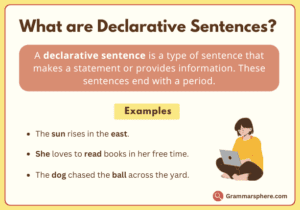
A declarative sentence is a type of sentence that makes a statement or provides information. These sentences end with a period.
Examples:
She loves to read books in her free time.
The dog chased the ball across the yard.
Water freezes at zero degrees Celsius.
Making Statements with Declarative Sentences
1. A declarative sentence provides information or shares a fact,
- The sky is blue.
2. When we want to make a statement or give details, we often use a declarative sentence.
- My friend is visiting tomorrow.
3. Declarative sentences are the most common in English, ending with a period.
- He enjoys playing the guitar.
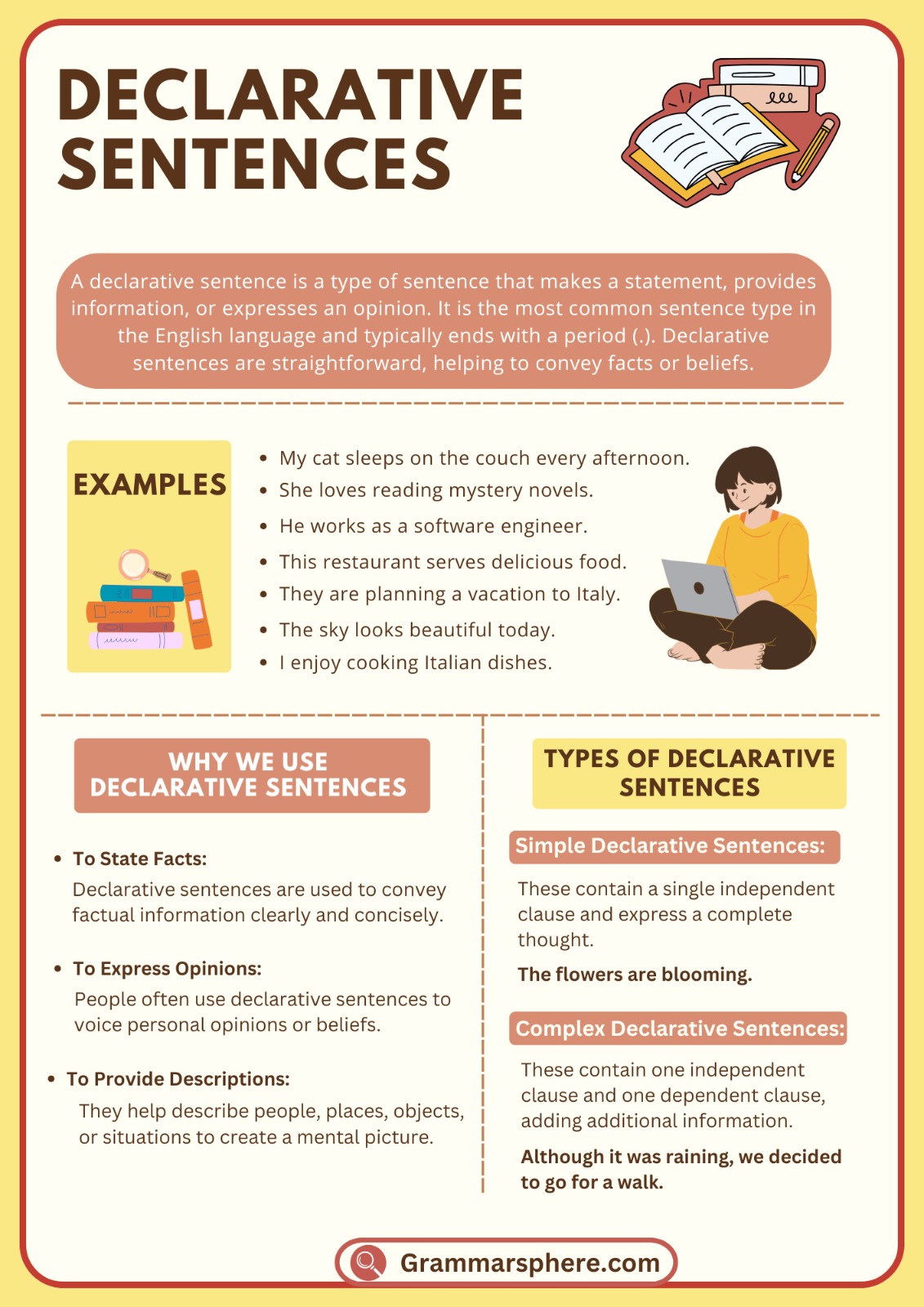
Rules of Declarative Sentences
1. States a Fact or Opinion
A declarative sentence is used to provide information, share facts, or express an opinion. It simply states something without asking a question or giving a command.
- The Earth revolves around the Sun.
- She believes in hard work.
2. Ends with a Period (.)
Declarative sentences always end with a period, distinguishing them from interrogative and exclamatory sentences.
- I enjoy listening to music.
- They went to the park yesterday.
3. Follows Subject-Verb Order
A declarative sentence follows the standard Subject + Verb + Object structure in most cases.
- The teacher explains the lesson.
- My brother plays the piano.
4. Can Be Positive or Negative
A declarative sentence can be affirmative (positive) or negative, depending on the message it conveys.
- She loves chocolate. (Positive)
- He does not like spicy food. (Negative)
Word Order in Declarative Sentences
Declarative sentences typically follow a Subject-Verb-Object (SVO) structure. This means the subject comes first, followed by the verb, and then the object (if there is one). This structure helps to make the sentence clear and direct, especially for beginners.
Basic Word Order: (Subject + Verb + Object)
- Subject: Who or what is performing the action.
- Verb: The action being performed.
- Object: Who or what is affected by the action.
1. The Cat Chased the Mouse.
The cat (subject)
chased (verb)
the mouse (object).
2. She Drinks coffe every morning.
She (subject)
drinks (verb) coffee
(object) every morning.
3. They built a house last year.
They (subject)
built (verb)
a house (object) last year.
Variations in Word Order
In some cases, a declarative sentence can include additional parts, such as adjectives, adverbs, or prepositional phrases for more detail. However, the basic word order remains the same.
1. The tall girl won the prize.
The tall girl (subject)
won (verb)
the prize (object) yesterday.
2. My friends arrived at the park.
My friends (subject)
arrived (verb)
at the park (object) early.
Types of Declarative Sentences
Declarative sentences can be divided into two main types: simple declarative sentences and compound declarative sentences. Each type serves to provide information but varies in structure.
1. Simple Declarative Sentences
A simple declarative sentence has a straightforward structure, containing only one main idea with a single subject and predicate. This direct approach makes it easy to understand.
- The car is red.
- Birds fly in the sky.
2. Compound Declarative Sentences
A compound declarative sentence combines two or more related ideas using coordinating conjunctions like and, but, or or. This type is useful for linking ideas smoothly, adding detail, or showing contrast.
- I wanted to go for a walk, but it started raining.
- She loves painting, but she also enjoys writing.
3. Complex Declarative Sentences
A complex declarative sentence includes one independent clause and at least one dependent clause. The dependent clause cannot stand alone as a sentence and usually provides additional details about the main idea.
- Because she studied hard, she passed the test.
- Although he was tired, he continued working.
4. Compound-Complex Declarative Sentences
A compound-complex declarative sentence combines two or more independent clauses with at least one dependent clause. This structure allows for a more detailed and layered statement, ideal for showing relationships between multiple ideas.
- Though she was tired, she went to the party, and she had a great time.
- I finished my homework before it got dark, but I still had some reading to do.
Difference Between Declarative and Other Types of Sentences
| Sentence Type | Function | Example | Key Feature |
|---|---|---|---|
| Declarative | States facts, shares information, or expresses opinions. | The weather is pleasant today. | Ends with a period (.) |
| Interrogative | Asks a question to seek information. | What time is the meeting? | Ends with a question mark (?) |
| Imperative | Gives commands, requests, or instructions. | Please close the door. | Often starts with a verb; may end with (.) or (!) |
| Exclamatory | Expresses strong emotions or excitement. | What a beautiful day it is! | Ends with an exclamation mark (!) |
Example Sentences with Declarative Sentences
- The sun sets in the west.
- She enjoys listening to music in the evening.
- Dogs are loyal animals.
- My family is planning a vacation next month.
- He works in a software company.
- They planted flowers in the garden.
- Water boils at 100 degrees Celsius.
- We are going to the park this afternoon.
- The teacher gave us homework for the weekend.
- Books are a great source of knowledge.
FAQS with Declarative Sentences
1️⃣ Q: What is a declarative sentence?
A: A sentence that states a fact or opinion and ends with a period (.).
2️⃣ Q: How does an interrogative sentence differ from a declarative one?
A: An interrogative sentence asks a question and ends with a question mark (?).
3️⃣ Q: What is the main purpose of an imperative sentence?
A: To give commands, requests, or instructions.
4️⃣ Q: When do we use exclamatory sentences?
A: To express strong emotions or excitement, ending with an exclamation mark (!).
You May Also Like

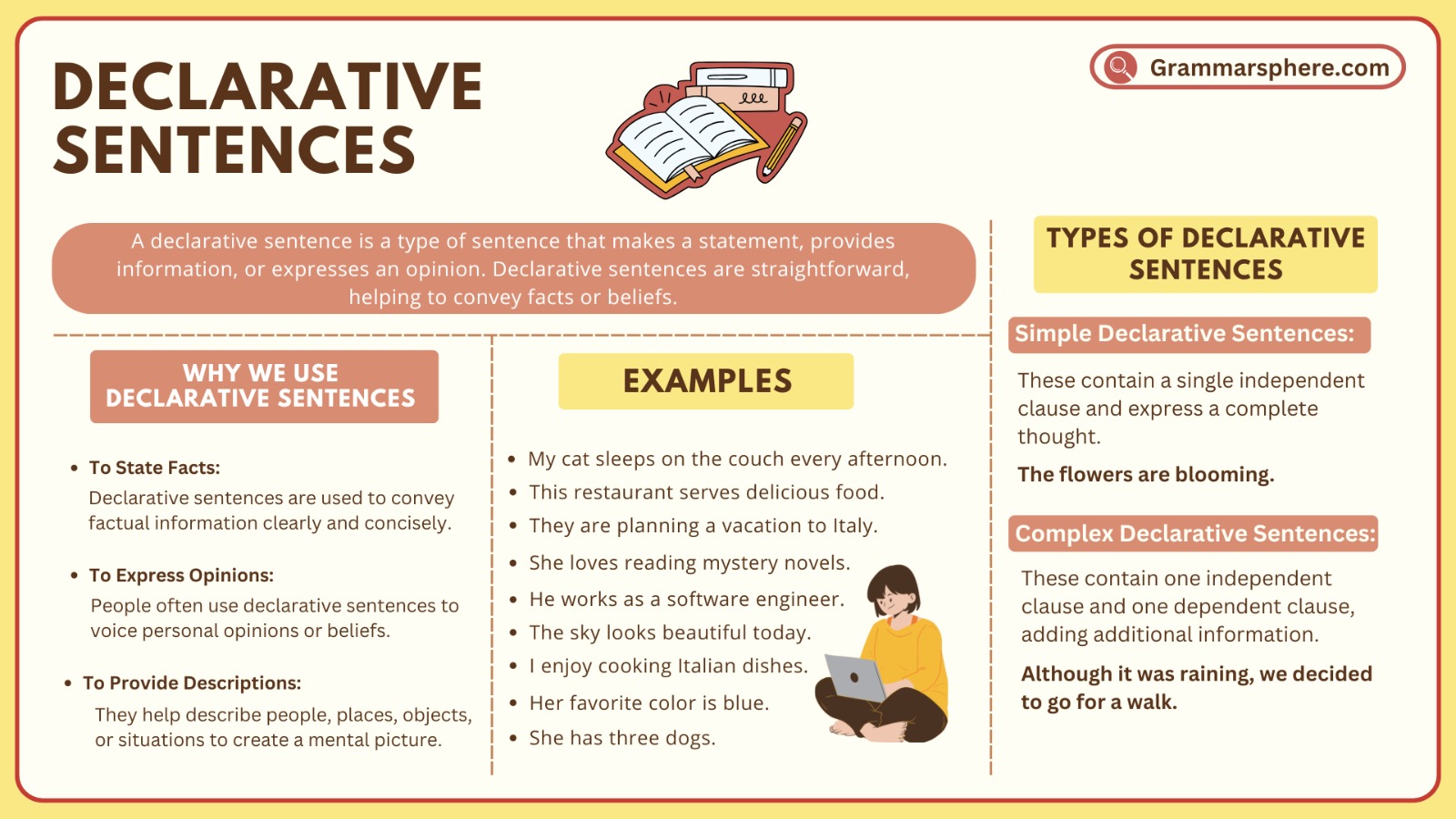
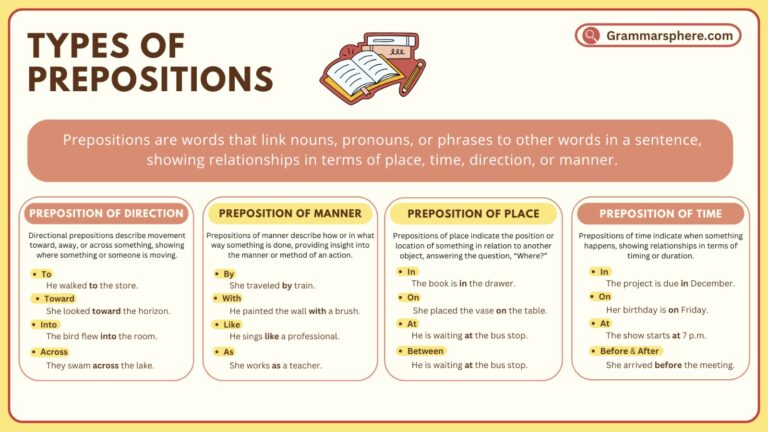

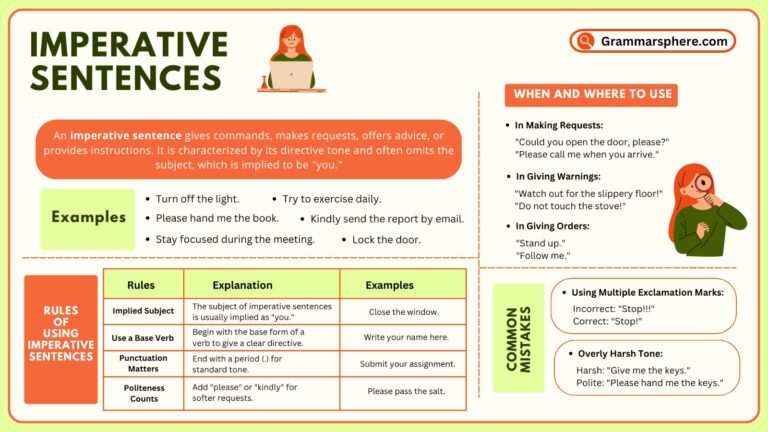
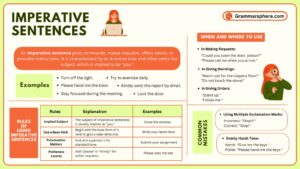
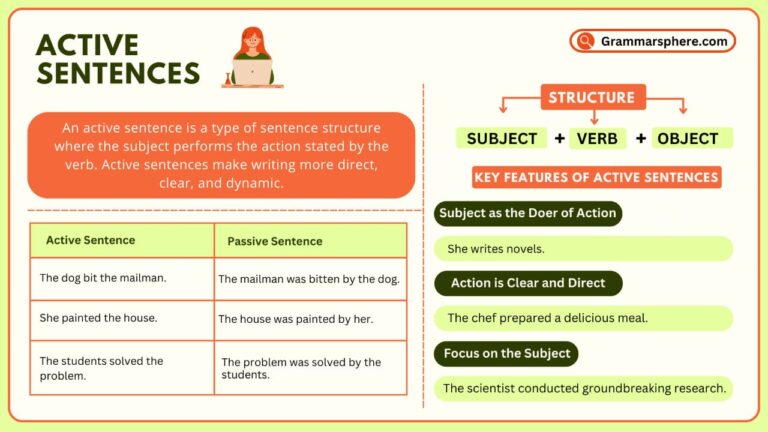


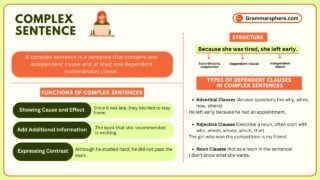
Leave a Comment